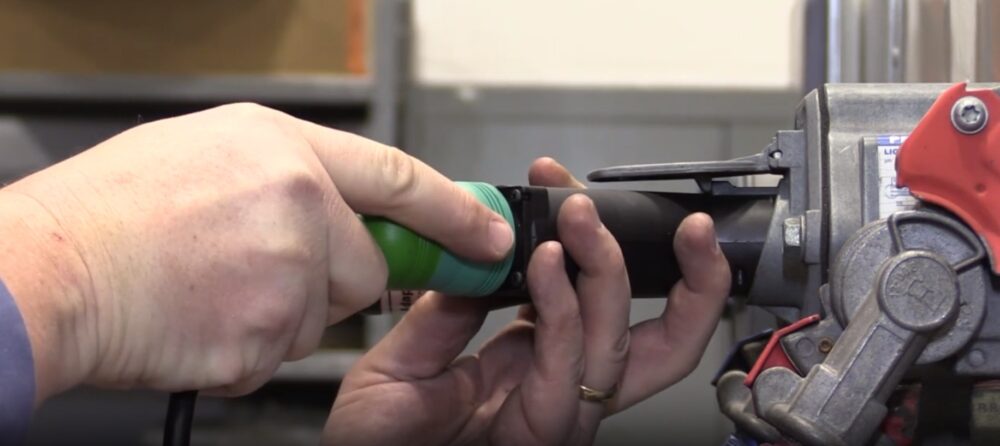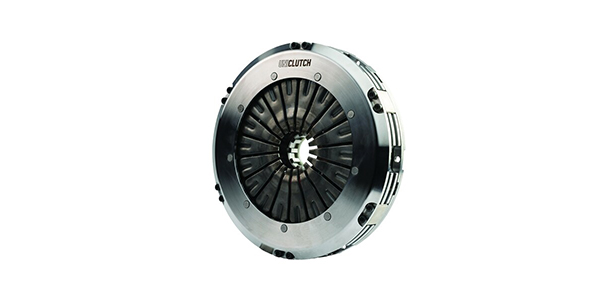Cleaning cast iron and aluminum, for the most part, represent two separate challenges. However, in a realistic world most shops cannot afford two different setups for cleaning these metals. Many shops have systems that work well for one, but not so well on the other. Are there effective ways to clean both types of metal with one setup? The answer to that depends, in large part, on what you consider clean. The manufacturers we spoke to for this article acknowledge that there is not one perfect system. Each system offers benefits, but may also leave some things to be desired in the end result if used on its own.
Chemicals
If you use a hot tank or a jet spray washer, you’re familiar with the variety of chemicals that go into them. According to manufacturers, dual-purpose chemicals will clean cast iron reasonably well and aluminum very well.
Cleaning aluminum with an aqueous system requires using a compatible solution that won’t etch or discolor the metal. When exposed to certain chemicals, aluminum forms a protective oxide layer that must be broken down in order to effectively clean the aluminum component — removing it takes a caustic solution. A chemical that contains inhibitors will protect the aluminum from oxidizing and turning black. The black oxidation can be removed with a de-oxidizer, which will then produce a uniform aluminum surface.
A chemical with a high pH, which is safe for all metals, can clean heavy contaminants and also protect the aluminum surface. Mixing in some type of caustic will cut through the oxidation layer. Using an inhibitor will protect the aluminum surface after it has been cleaned.
While aluminum-safe chemicals may not be as aggressive as those used for cast iron, they are safe for both products. Consequently, your cycle times may last a bit longer on cast iron components. The results will still be the same — it’s just going to take a little longer. Remember to use the proper temperature setting on your spray washer or hot tank and to be sure you have the right concentration of chemical. By monitoring the pH levels, you can be sure the solution stays in the 12- to 14-pH range in most cases.
Ultrasonic Cleaning
Ultrasonic cleaning systems are seen more and more in today’s shops because of their ability to clean right down to the component’s bare surface. Ultrasonic cleaning is the process of creating tiny vacuum bubbles on the surface of the part, which then act as scrubbing agents to pull dirt particles away from the component surface.
Like other aqueous systems, ultrasonic systems use a chemical solution to help get the part clean. The difference with ultrasonic systems is that the bubbles create a cavitation effect that can reach virtually every area of the component that is exposed to the chemical solution. Anywhere water can reach, it can clean. The chemical you use may be the same as for the jet spray washer, however our experts say that concentration levels can be much lower with an ultrasonic system.
Some manufacturers of this equipment claim that it eliminates 90-95% of the labor involved with cleaning because you can set the part in and it will do all the work. Some areas may have to be lightly hand cleaned or brushed off, but in many cases the part comes out with no need for further cleaning. Ultrasonic systems are also very fast, cleaning many components in 10 to 20 minutes.
Soda Blasting
Some stubborn grease and hard, baked-on carbons can only be removed by using some form of blast media. Manually operated blast systems like a glass bead machine direct a high-pressure stream of glass media at the surface of the part. Bead media produces a nice and clean-looking finish, but it can be difficult to remove the media afterward. Glass media can also become embedded in the surface of aluminum components due to its soft metal characteristics.
Soda blasting equipment on the other hand, uses a form of baking soda media for removing baked-on carbons and sludge is another option for components that are too difficult to clean using other systems. System makers say their products can safely clean many components without damaging sensitive substrates.
These systems are “one pass,” meaning the media is not reusable. Soda media is water-soluble so you don’t have to worry about blasting away in hidden passages. Soda breaks and becomes “fractured” when it hits the surface of the part, turning into a fine particle that can be simply washed away.
Some shops use a soda blast system for spot cleaning purposes. These shop operators tell us they blast the most difficult areas with the soda and then allow their other systems to clean the rest of the component.
Because it isn’t reused, the cost can be a little bit higher with soda, but it also can save labor time due to the fact you don’t have to mask off anything or pre-wash the parts. And by minimizing how much they use the system, some shops say they are able to keep the cost down.
Wet Slurry Blasting
Wet slurry blasting, which has been used successfully in the aerospace industry for years, has been recently introduced into the automotive industry. One of the reasons it has not made it into this market sooner is that it’s often seen as too expensive for most smaller shops.
The wet slurry blast system basically mixes water and an abrasive media together into one solution in a sump, which then sends the mixed solution to the nozzle. The slurry solution can be either used in a manually operated blast cabinet or in an automated system with multiple nozzles.
Unlike a sandblast or dry-blast process that strikes the part once and ricochets away, the slurry actually scrubs the components. Because the water surrounds the media, it protects it from becoming embedded in the surface itself. The system can do extremely fine cleaning as well as remove scale, carbon buildup and get into all the nooks and crannies. The system can also handle parts with oil and grease on them, eliminating the traditional steps of washing and drying the parts before putting them into a dry blast cabinet. With a wet slurry system you can do that all in one process.
One of the advantages wet slurry blasting has provided to the aerospace industry is its capability for exposing very fine cracks in a casting. Blasting a casting with a traditional media blaster might actually push the top edges of a microscopic crack together, making it impossible to see even with magnetic particle inspection. With slurry blasting, the water gets in there and it will actually clean out that crack, leaving it exposed for inspection.
You still must rinse and thoroughly inspect the part afterward to be sure all the abrasive media has been removed. A manufacturer marketing this system to the industry says that it is addressing this problem by adding a secondary rinse system, which will be tied to the machine as part of the filtration package. It’s a closed-loop system that includes a filter to separate the oil and waste.
There are many cleaning alternatives for shops. Finding what works best for your shop is the key. For some, using a combination of cleaning systems works best.


